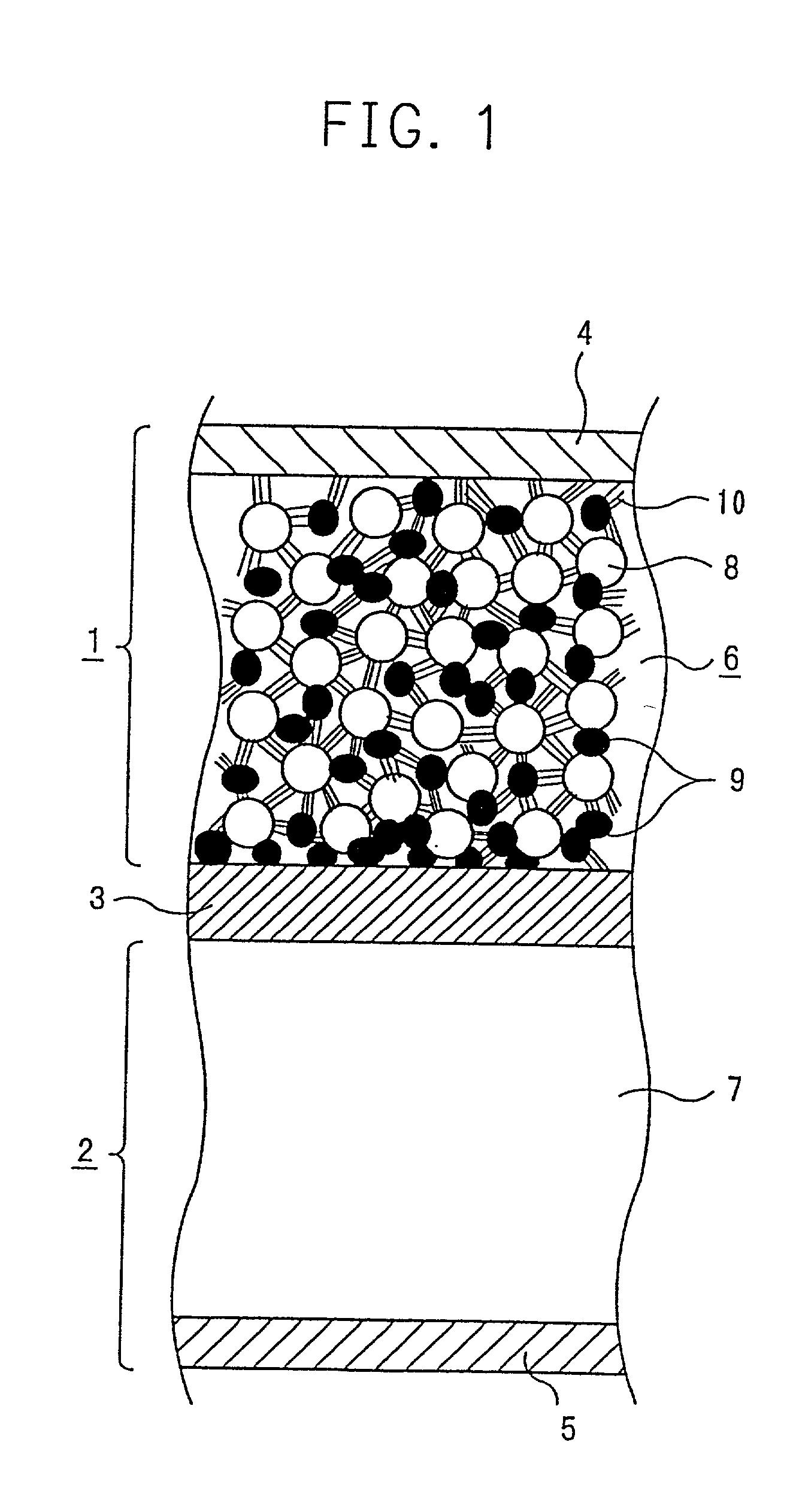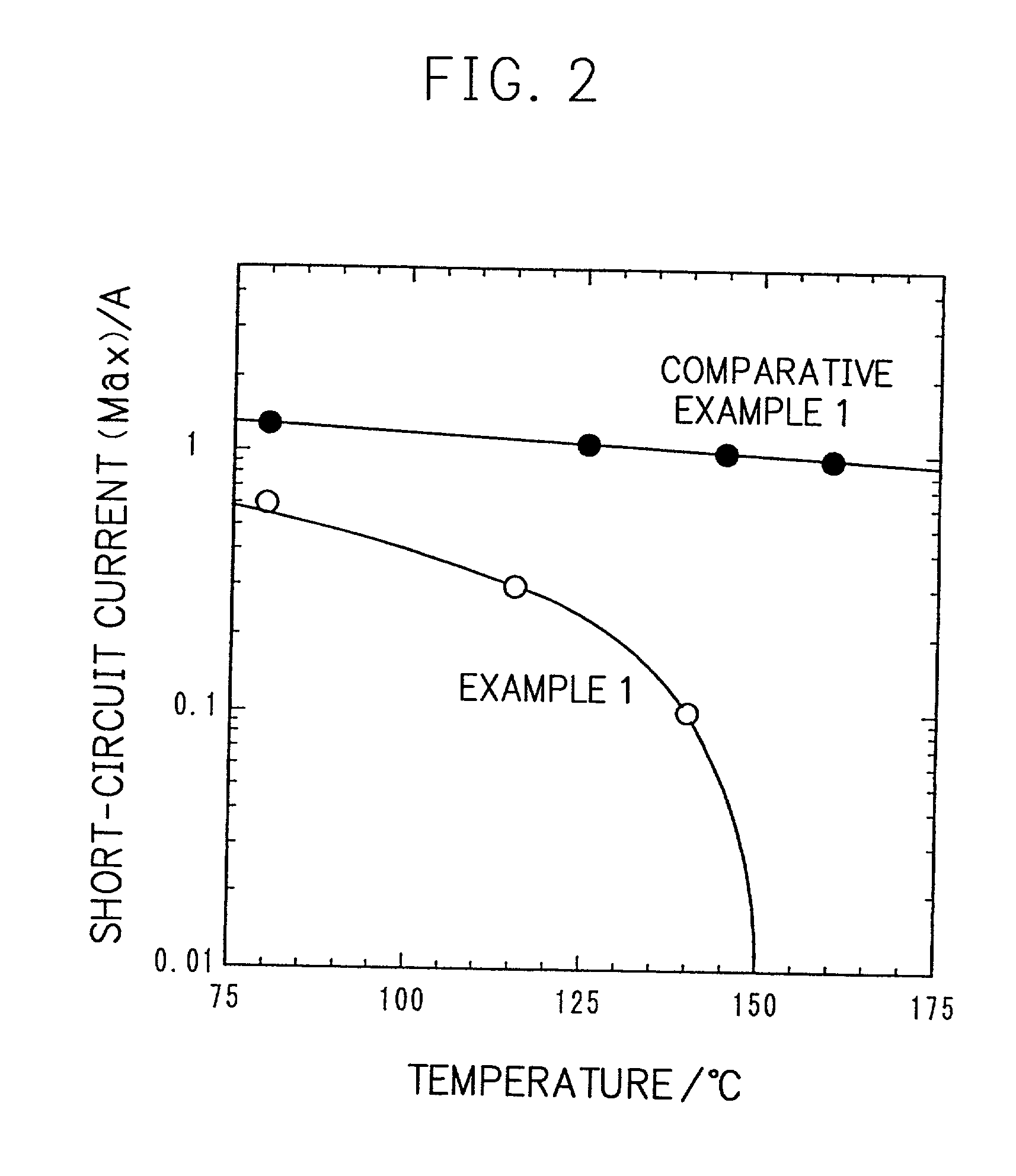Battery and process for preparing the same
a battery and process technology, applied in the field of batteries and process for preparing the same, can solve the problems of increasing the short-circuit current that cannot be controlled in a conventional lithium secondary battery, increasing the temperature of the battery further, and avoiding exothermic reactions, etc., to achieve supplement low electronic conductivity, low volume specific resistance, and low electronic conductivity
- Summary
- Abstract
- Description
- Claims
- Application Information
AI Technical Summary
Benefits of technology
Problems solved by technology
Method used
Image
Examples
example 2
[0126] The ratio of the electronically conductive material in preparation of the positive electrode in Example 1 was varied. FIG. 4 illustrates the relationship between a ratio of the electronically conductive material and volume specific resistance of the electrode and relationship between a ratio of the electronically conductive material and discharging capacitance. Specifically, FIG. 4 illustrates relationship between a ratio of the electronically conductive material to 100 parts by weight of the total solid content of the electrode (herein the positive electrode) of the battery and volume specific resistance of the electrode ((a) in the figure), and relationship between a ratio of the electronically conductive material to 100 parts by weight of the total solid content of the electrode (herein the positive electrode) of the battery and discharging capacitance ((b) in the figure).
[0127] As shown in the figure, when an amount of the electronically conductive material is at most 0.5...
example 3
[0129] Particle size of the electronically conductive material in preparation of the positive electrode in Example 1 was varied. FIG. 5 illustrates the relationship between the particle size of the electronically conductive material and the resistance of the electrode ((a) in the figure) and the relationship between the particle size of the electronically conductive material and the discharging capacitance ((b) in the figure).
[0130] When the particle size of the electronically conductive material is at most 0.05 .mu.m, a filling ratio of the electronically conductive material is decreased, which means that volume of the electronically conductive material per a unit volume of the positive electrode active material layer is increased, namely that an amount of the positive electrode active material is decreased. Therefore, when the particle size of the electronically conductive material is at most 0.05 .mu.m, discharging capacitance is decreased. On the other hand, when the particle si...
example 4
[0132] Pellets of an electronically conductive material (prepared by mixing 60 parts by weight of carbon black in the form of fine particles and 40 parts by weight of polyethylene) having volume specific resistance of 0.2 .OMEGA..cm at a room temperature and volume specific resistance of 20 .OMEGA..cm at 135.degree. C. were finely pulverized by using Ball Mill to obtain fine particles of the electronically conductive material.
[0133] By using this fine particles of the electronically conductive material, an electrode (herein a positive electrode) was prepared in the same manner as in Example 1, and furthermore, a battery was prepared in the same manner of preparing the negative electrode and the battery as in Example 1.
[0134] Table 3 shows the average particle size of the electronically conductive material, resistance of each electrode, and discharging capacitance of the battery.
[0135] In this example, since the electronically conductive material was pulverized according to Ball Mill...
PUM
| Property | Measurement | Unit |
|---|---|---|
| melting point | aaaaa | aaaaa |
| particle size | aaaaa | aaaaa |
| temperature | aaaaa | aaaaa |
Abstract
Description
Claims
Application Information
 Login to View More
Login to View More - R&D
- Intellectual Property
- Life Sciences
- Materials
- Tech Scout
- Unparalleled Data Quality
- Higher Quality Content
- 60% Fewer Hallucinations
Browse by: Latest US Patents, China's latest patents, Technical Efficacy Thesaurus, Application Domain, Technology Topic, Popular Technical Reports.
© 2025 PatSnap. All rights reserved.Legal|Privacy policy|Modern Slavery Act Transparency Statement|Sitemap|About US| Contact US: help@patsnap.com



